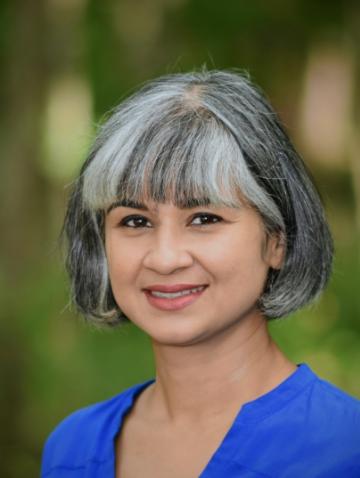Mrinalini Rajagopalan

Mrinalini Rajagopalan is Associate Professor in the Department of History of Art and Architecture at the University of Pittsburgh. She is a historian of India’s built environment and is particularly interested in the impact of colonialism and nationalism on the architecture and urbanism of modern South Asia. Her first monograph Building Histories: The Archival and Affective Lives of Five Monuments in Modern Delhi (University of Chicago Press, 2016) traces the modern lives of five medieval monuments in India’s capital city, Delhi, and brings attention to their contested histories, unexpected uses, and ideological appropriations by state and non-state actors. Her current project traces the built works of Begum Samru—a wealthy dowager who rose from modest beginnings as a dancing girl to become the independent ruler of a prosperous territory in nineteenth-century North India. Another more ambitious project, investigates the various architectural products built, commissioned, and patronized by the Tata Corporation during India’s long twentieth-century transformation from a European colony to a socialist nation and most recently to an economically-liberal state.
On the Dr. Malathy Singh Visiting Fellowship at Yale University:
The year that I spent at Yale as a recipient of the Malathy Singh Visiting Fellowship, was profoundly beneficial to my research as well as my pedagogy. In terms of my research, the fellowship offered me an intellectual community of scholars who were deeply invested in South Asian history, politics, and culture. Through discussions with scholars who had specialized knowledge about India as well as broad disciplinary expertise, I was able to reconceptualize my dissertation in novel ways for my first book. On a more practical note, I was able to mine the collections of the Beinecke Library and the Yale Center for British Art for images and archival materials that contributed to book manuscript. The active community of learners at the South Asia Council (faculty, staff, undergraduate and graduate students, and visiting scholars and resident fellows) created a vibrant intellectual environment that kept me energized and on my toes for the entire year. I especially looked forward to the weekly lectures where topics ranged broadly from film theory, to environmental history, to the political climates of nationalism.
I remain grateful for the opportunity to teach South Asia-focused courses as part of my fellowship at Yale. It was truly a pleasure to teach Yale undergraduates whose curiosity and determination were inspirational to me as an instructor. Many of my students at Yale were international students, and I was enriched by the unique experiences and perspectives that they brought to classroom discussions. While my teaching is now more globally oriented, I believe that my experience teaching interdisciplinary courses on the built environment in South Asia gave me a sound foundation for developing syllabi that bridge theory and practice, historical and contemporary themes, and connecting local and global scales.
My year as the Malathy Singh Visiting Fellow was a time of tremendous growth for me as a scholar of South Asia and professor of architecture and urbanism. I will always look back at this time with fondness for the community that I had at Yale and gratitude for the opportunity to contribute towards South Asian studies in the academy.